Wie züchtet man Stockrosen im Garten? Stockrose Pflanze Pflegeanleitung
Die Stockrose ist eine hohe Pflanze, die im Garten sehr majestätisch aussieht. Aufgrund ihrer Wuchseigenschaften ist sie eine der beliebtesten Pflanzen unter Gärtnern. Der Anbau ist auch für unerfahrene Gärtner nicht schwierig, und die schönen Blüten sind eine Belohnung für all die Arbeit und Pflege, die man ihr das ganze Jahr über zukommen lässt. Lesen Sie, was Sie über Stockrosen wissen sollten, und erfahren Sie, wie Sie die Pflanze am besten pflegen.
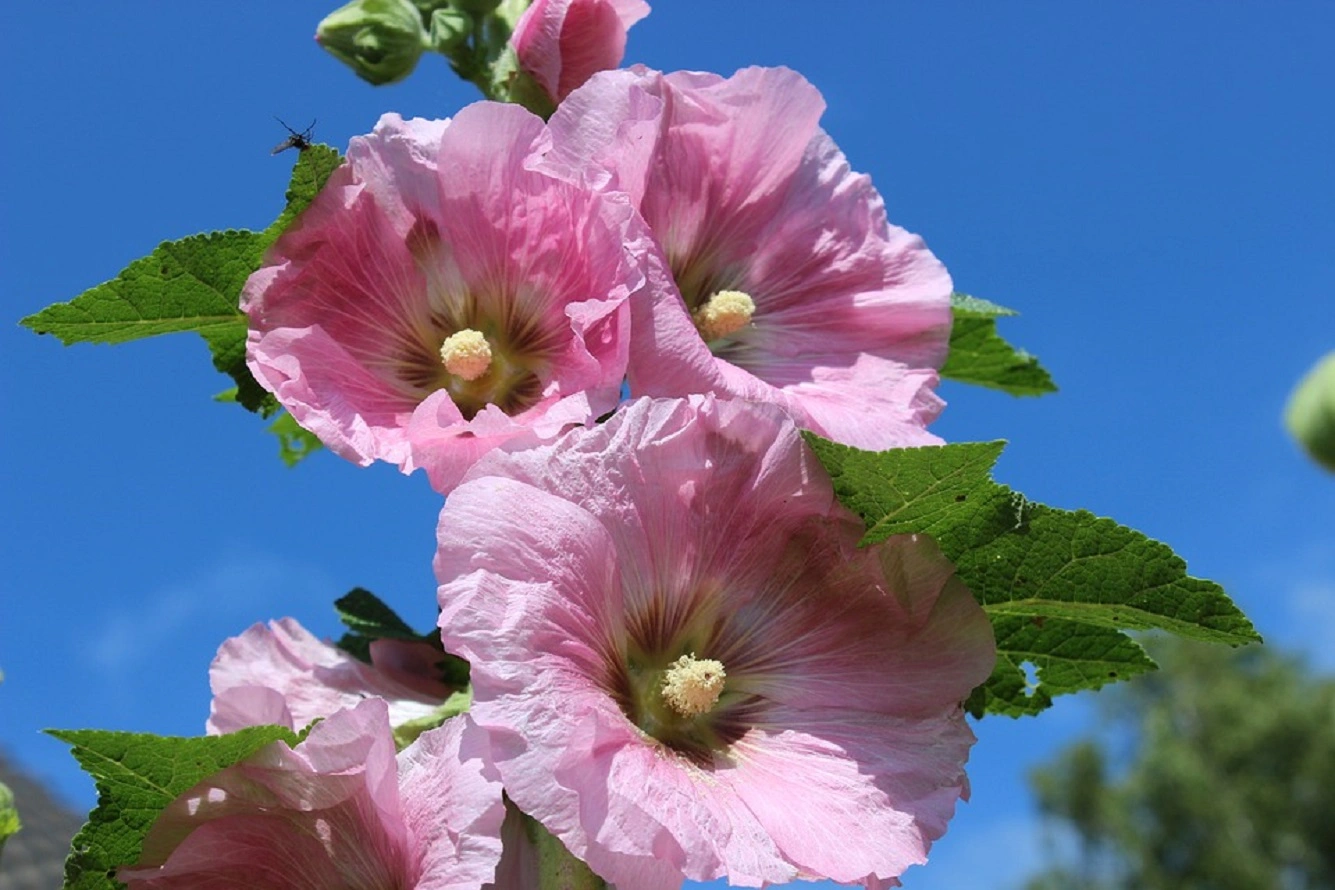
Stockrose - Herkunft und Eigenschaften der Pflanze
Die Stockrose, genauer gesagt Alcea L., ist eine Pflanze aus der Familie der Malvengewächse. Es gibt über 80 Arten dieser Pflanzen, die an verschiedenen Orten der Welt wachsen. In ihrem natürlichen Lebensraum wächst die Malve vor allem in trockenen Gebieten rund um das Mittelmeer.
Die Stockrose entwickelt ihre Blüten über viele Wochen, bis sie schließlich während der Blütezeit den Garten schmücken. Derzeit erfreut sich die Stockrose wieder großer Beliebtheit, nachdem sie eine Zeit lang von anderen Pflanzenarten verdrängt worden war.
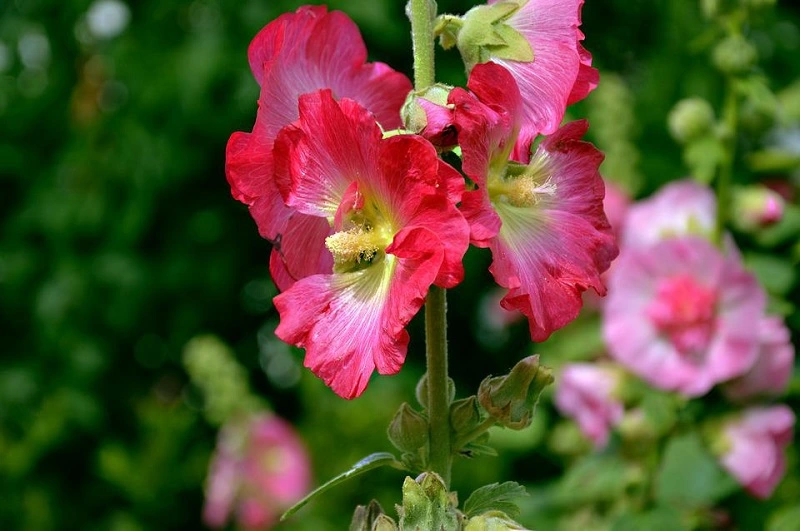
Hollyhock - was sind die beliebtesten Sorten?
Unter den vielen Sorten von Stockrosen sind einige die beliebtesten unter den Gärtnern. Zu dieser Gruppe gehören Pflanzen wie:
Gemeine Stockrose - Alcea rosea ist die beliebteste Sorte, die vor allem in ländlichen Gegenden angebaut wird. Sie hat charakteristische große, einzelne Blüten, die weiß, rot, rosa und lavendel sein können. Wegen der Höhe, die sie erreichen kann, ist es gut, sie mit einem Stock zu stützen, damit sie bei stärkeren Windböen oder Regen nicht umknickt. Russische Stockrose - Alcea rugosa ist eine Sorte mit geringen Ansprüchen, die frostfest ist. Sie stammt aus den südlichen Regionen Russlands und der Ukraine und kann bis zu 2 Meter hoch werden. Sie blüht von Juni bis September und entwickelt große, runde, hellgelbe Blüten. Holländische Malve - wird auch als Moschusmalve bezeichnet und entwickelt einen starken und angenehmen Duft. Diese Sorte wird bis zu 60 cm hoch, die Blüten erscheinen im Hochsommer und bleiben bis zum Herbst. Sie sind weiß oder rosa. Es ist eine perfekte Malvenart für kleine Gärten. Hohe Malve - wächst bis zu 1 m hoch, entwickelt weiße Blüten. Eine universelle Sorte, die sich für Blumenarrangements in verschiedenen Landschaftsgestaltungen eignet.

Wie wachsen Stockrosen im Garten?
Der Anbau von Stockrosen ist keine schwierige Aufgabe - selbst für diejenigen, die noch nie Blumen angebaut haben. Wenn Sie sich für diese Pflanze entscheiden, sollten Sie die Stöcke so vorbereiten, dass sie nicht aus Versehen brechen. Sie können auch elastische Gartenschnur verwenden.
Wenn Sie sich fragen, wo Sie Stockrosen pflanzen sollen, achten Sie darauf, dass Sie einen Standort wählen, der vor starken Windböen geschützt ist. Es bietet sich an, sie neben einem Zaun oder einer Hauswand zu pflanzen. Auf diese Weise sind sie noch besser vor dem Ausbrechen geschützt.
Die Pflanze blüht praktisch den ganzen Sommer über, aber nur, wenn sie an einem guten Standort wächst. Bei der Wahl des Standorts für Stockrosen sollte man daran denken, dass sie nicht nur Windschutz, sondern auch genügend Sonnenlicht und einen nährstoffreichen, durchlässigen Boden braucht. Die Pflanze bevorzugt einen frischen und feuchten Boden. Beachten Sie aber, dass die Stockrose keine Staunässe mag.
Hollyhock - Gießen
Die Stockrose muss häufig gegossen werden. Wenn sie in voller Sonne gepflanzt wird, braucht sie viel Wasser. Vermeiden Sie jedoch Situationen, in denen das Wasser nicht genügend Zeit hat, um zu verdunsten, und stattdessen im Boden verbleibt, da dies für die Pflanze schädlich ist.
Wenn Sie Stockrosen gießen, vermeiden Sie es, die Blüten und Blätter zu benetzen, da dies ihre Feuchtigkeit erhöhen könnte. Das ist ein einfacher Weg zu Pilzkrankheiten wie Grauschimmel.
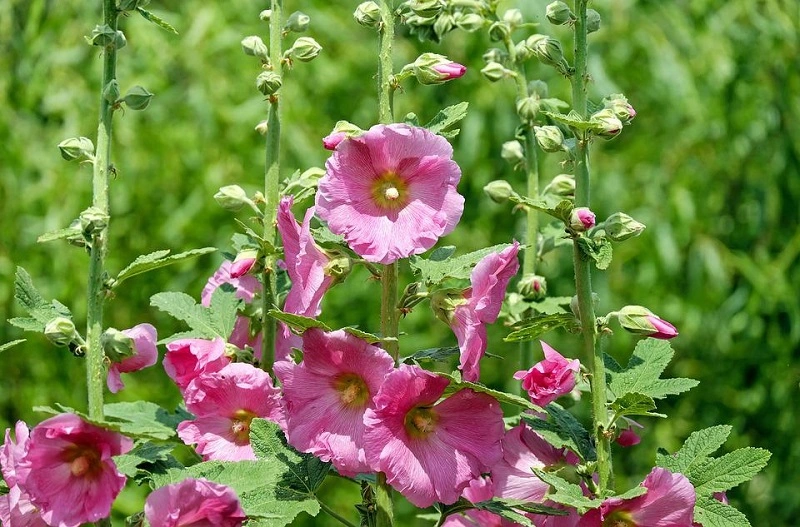
Müssen Stockrosen gedüngt werden?
Stockrosen müssen durch regelmäßiges Düngen gestärkt werden. Wenn Sie die Pflanze mit ausreichend Nährstoffen versorgen, können Sie ihre Gesundheit verbessern und die Blüte fördern. Befolgen Sie diese Schritte, um die Pflanze richtig zu pflegen:
- Füttern Sie die Stockrosen ab Anfang Juni alle 4 Wochen bis zum Ende der Blütezeit mit Kompost,
- Die erste Gabe Kompost sollte vor Beginn der Blüte erfolgen, am besten in der zweiten Aprilhälfte.
Wie vermehrt man Stockrosen?
Im Garten belassene Stockrosen vermehren sich von selbst. Wenn Sie die Blüten nach der Blütezeit an der Pflanze belassen, bilden sich Merikarpen mit Samen. Diese fallen im Herbst auf den Boden, teilen sich und bilden Sämlinge. Wenn die Anzahl der Sämlinge zu groß ist oder sie zu dicht beieinander gepflanzt werden, können Sie ihnen helfen und die schwächsten Sämlinge entfernen.
Sie können Stockrosen auch selbst vermehren. Dazu können Sie die von den Pflanzen geernteten Samen verwenden. Sie können auch bewurzelte Stecklinge verwenden.
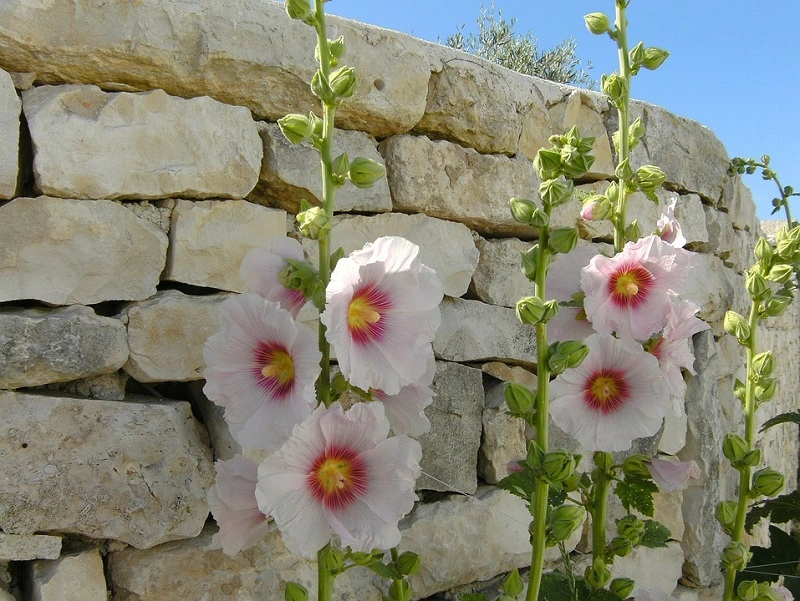
Hollyhock - Eigenschaften der Pflanze
Die Stockrose ist nicht nur eine schöne Pflanze. Sie wird auch wegen ihrer Eigenschaften geschätzt und in der Kräutermedizin und Kosmetologie verwendet. Sie ist reich an schleimbildenden Substanzen und auch:
- Harze,
- mineralische Verbindungen,
- Zucker,
- Flavonoide.
Die Inhaltsstoffe der Pflanze haben krampflösende, harntreibende, fiebersenkende und entzündungshemmende Eigenschaften. Aus diesem Grund ist die Stockrose ein unverzichtbarer Bestandteil der Hausapotheke.
Stockrose - Krankheiten und Schädlinge
Im ersten Jahr nach der Pflanzung der Stockrose sollten die Pflanzen vor Schnecken geschützt werden.
Blattläuse sind ein häufiges Problem bei der Anpflanzung von Stockrosen, das aber mit geeigneten Mitteln schnell behoben werden kann. Sie sind in jedem Gartengeschäft erhältlich.
Malvenrost - puccinia mavacearum ist die häufigste Krankheit, die Stockrosen befällt. Es handelt sich um eine Pilzkrankheit, die, wie der Name schon sagt, vor allem Malven befällt, darunter auch Stockrosen. Der Pilz befällt das Gewebe der Pflanze, das mit der Zeit abstirbt. Die Krankheit ist an charakteristischen hellen Flecken zu erkennen, die später dunkler werden - sie erscheinen auf der Unterseite der Blätter. Die Oberseite der Blätter wird mit gelben Läsionen bedeckt. Das befallene Gewebe verwelkt und stirbt ab. Das Entfernen der infizierten Blätter ist eine gute Möglichkeit, die Krankheit zu bekämpfen. Es ist auch sinnvoll, die Pflanze mit Antimykotika zu besprühen, um die Struktur des Pflanzengewebes zu stärken.
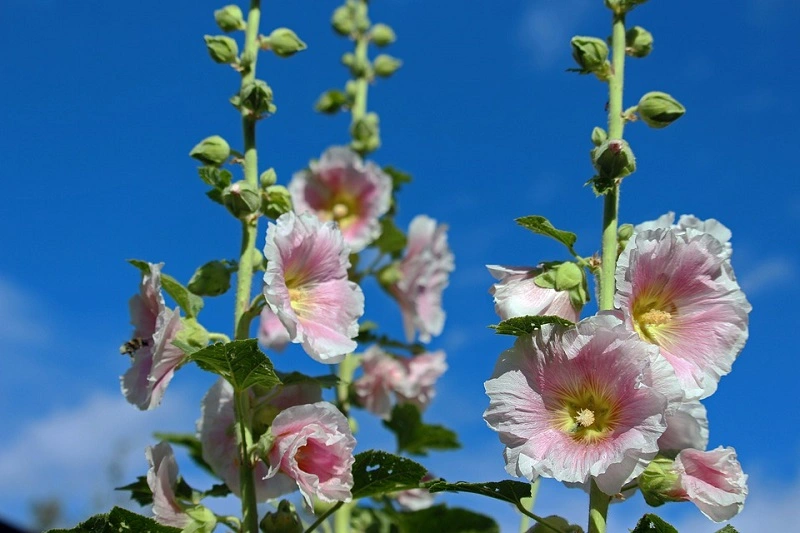
📍 Was sind Stockrosen?
Die Stockrose ist eine Pflanze aus der Familie der Malvengewächse. Sie sieht nicht nur schön aus im Garten, sondern hat auch viele nützliche Eigenschaften. Es gibt mehrere Dutzend Sorten dieser Pflanze - sie haben unterschiedliche Größen und Farben.
📍 Wie sieht die Stockrose aus?
Stockrosen sehen ziemlich beeindruckend aus. Sie haben charakteristische lange Stängel, an denen sich viele Blüten entwickeln. Je nach Sorte haben sie unterschiedliche Farben.
📍 Wann sät man Stockrosen aus?
Stockrosen sollten zwischen Ende Mai und Juli gepflanzt werden. Die Samen können in Gefäße gepflanzt und nach der Keimung an ihren endgültigen Bestimmungsort gebracht werden. Dies sollte im September geschehen.
📍 Was ist der beste Boden für Stockrosen?
Wenn Sie sich entschließen, Stockrosen zu pflanzen, achten Sie auf den richtigen Boden. Die Pflanze bevorzugt einen nährstoffreichen und sehr durchlässigen Boden. Er sollte immer mäßig feucht sein. Lehmige Böden sind nicht gut für Stockrosen, da sie zu schwer sind.
Empfohlene Artikel




